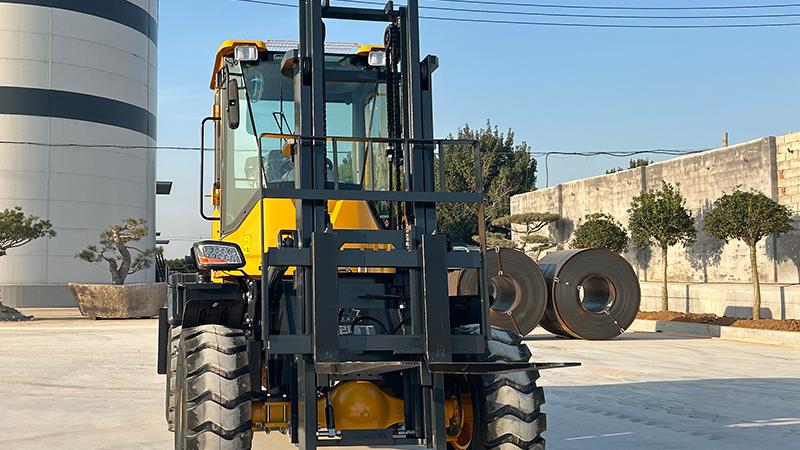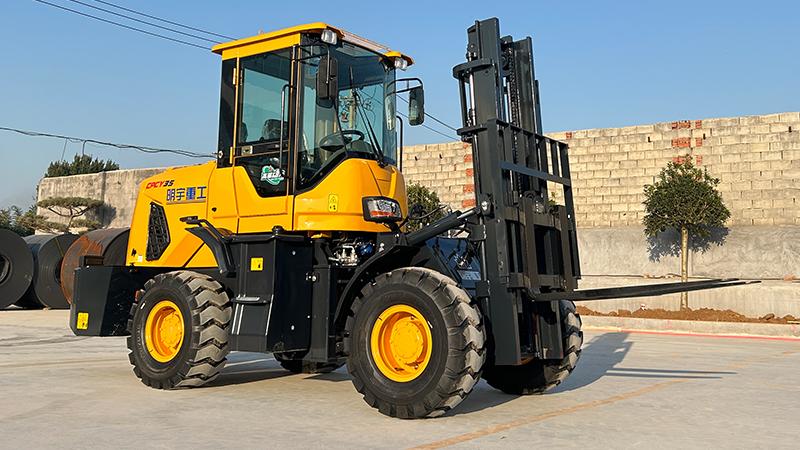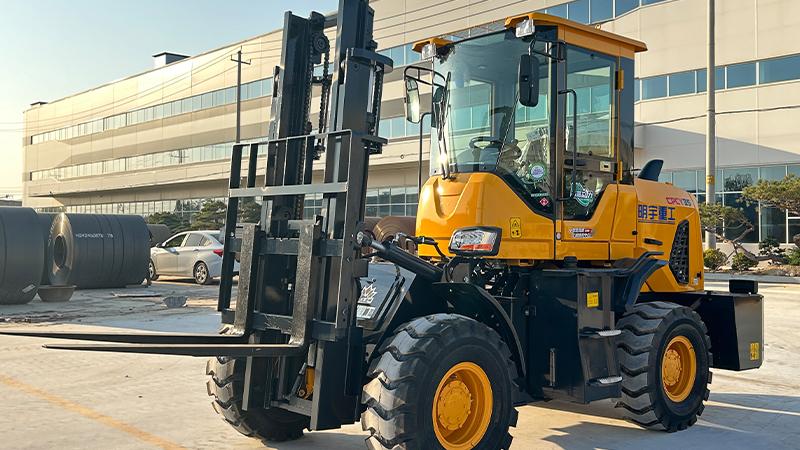Operating off-road forklifts on construction sites requires strict adherence to safety regulations set by the Occupational Safety and Health Administration (OSHA). These guidelines are designed to protect workers from accidents, injuries, and fatalities associated with heavy machinery. Off-road forklifts, also known as rough-terrain forklifts, are commonly used in construction due to their ability to navigate uneven surfaces and lift heavy loads. However, their operation comes with significant risks if proper safety measures are not followed. Understanding OSHA’s requirements is essential for construction companies to maintain compliance and ensure a safe working environment.One of the primary OSHA requirements for operating off-road forklifts is proper operator training and certification. OSHA mandates that all forklift operators must complete a formal training program that includes classroom instruction, hands-on practice, and an evaluation of their skills. The training must cover topics such as load handling, stability principles, workplace hazards, and emergency procedures. Employers are responsible for ensuring that only certified operators are allowed to operate off-road forklifts. Additionally, refresher training is required if an operator is involved in an accident, observed operating the equipment unsafely, or assigned to a different type of forklift.
Another critical OSHA requirement is the regular inspection and maintenance of off-road forklifts. Before each shift, operators must conduct a pre-operation inspection to check for any mechanical issues, such as leaks, tire damage, or faulty brakes. Any defects must be reported immediately, and the forklift should not be used until repairs are made. OSHA also requires that forklifts undergo periodic maintenance by qualified technicians to ensure they remain in safe working condition. Proper maintenance not only prevents accidents but also extends the lifespan of the equipment.Load handling is another area where OSHA imposes strict regulations. Off-road forklifts must never exceed their rated load capacity, as overloading can lead to tip-overs or mechanical failures. Operators must ensure that loads are properly balanced and secured before lifting or moving them. OSHA also prohibits carrying passengers unless the forklift is specifically designed with an approved seat for additional riders. Furthermore, lifting personnel requires the use of a securely attached safety platform and fall protection equipment, such as harnesses and lanyards.

Stability is a major concern when operating off-road forklifts, especially on uneven terrain. OSHA requires that operators maintain a safe speed and avoid sudden movements that could destabilize the forklift. When traveling on slopes, the load should always be kept uphill to prevent tipping. If the terrain is too steep or unstable, the forklift should not be used. Employers must also ensure that the worksite is free from unnecessary obstacles, such as debris or loose materials, that could interfere with safe operation.Visibility is another key factor in forklift safety. OSHA requires that off-road forklifts be equipped with adequate lighting and reflectors when operating in low-light conditions. Operators must use horns or warning signals when approaching blind corners or pedestrian pathways. Spotters may be required in congested areas to guide the forklift and prevent collisions. Additionally, OSHA prohibits the use of forklifts in areas where the operator’s vision is obstructed, unless additional safety measures are implemented.

Personal protective equipment (PPE) is also a critical component of OSHA’s forklift safety requirements. Operators and nearby workers must wear high-visibility vests, hard hats, and steel-toed boots to minimize injury risks. In noisy environments, hearing protection may also be required. Employers must provide appropriate PPE and enforce its use to comply with OSHA standards.
Finally, OSHA requires that employers establish and enforce safety protocols for off-road forklift operations. This includes creating designated travel paths, implementing speed limits, and ensuring that all workers are aware of forklift movement patterns. Emergency procedures, such as how to respond to a tip-over or mechanical failure, must also be clearly communicated. Regular safety meetings and hazard assessments can help reinforce these protocols and prevent accidents.Failure to comply with OSHA requirements can result in severe penalties, including fines and work stoppages. More importantly, neglecting these regulations puts workers at risk of serious injuries or fatalities. Construction companies must prioritize forklift safety by investing in proper training, maintenance, and operational controls. By following OSHA’s guidelines, employers can create a safer workplace and reduce the likelihood of accidents involving off-road forklifts.
Post time:Aug.15.2025

